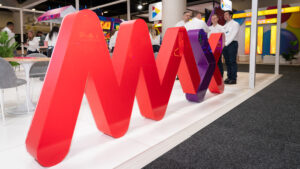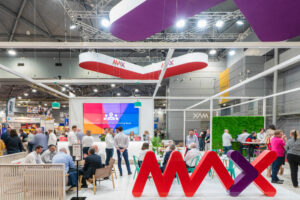A multimillion-dollar transformation is helping safeguard the future of the club formerly known as Kogarah RSL, while disrupting Australia’s traditional club scene, as MAX discovers.
Several years ago Kogarah RSL (KRSL) general manager Grant Amer took one final look around the premises and, with a heavy heart, knew the time had come for tough decision-making.
Having worked at the club for the best part of three decades, Amer was familiar with every inch of the space. He knew there was much more to this well-patronised but ageing 1950s relic than the woeful financial statements, tired décor and declining client base would suggest.
Gathering his board together, Amer voiced his concerns about the future viability of the club and pleaded for help to find a way forward.
With the writing clearly on the wall, a consultancy firm was deployed and a business plan developed. While the subject of amalgamation was raised, it was shot down swiftly.
“It was looked upon as waving the white flag where we’d be effectively handing over our identity to other clubs and we just weren’t comfortable with that,” he says.
The process that ensued required the 60-year-old club to undertake an honest appraisal of its balance sheet and outline where its strengths and weaknesses lay.
The forensic investigation revealed that, while it may have been short on cash flow, the one thing the club had in plentiful supply was land. In fact, the club found it had more than $9 million worth in land holdings. Amer convinced his board that this was the way forward.
His hunch proved correct and on 26 September this year Amer threw open the doors to a multimillion-dollar mixed use residential and retail development securing the club’s financial future and revolutionising the way the entity does business.
“We’ve got a strong focus on the ambience of the place and now compare ourselves to the most successful pubs in the area.”
Grant Amer
Amer says the club first began experiencing financial stress around 2004/05 when the changing demographics of the local area led to a decline in the club’s existing customer base.
In 2011 the executive management team put together a strategic plan and determined they would investigate their options, including what Amer refers to as the “eventual partnership of an industry expert in TGS (now MAX)” in 2014.
On the one hand the board recognised that the decision to take advantage of the club’s existing land holdings meant the club would need to be closed and trading ceased for a minimum of three years. Yet they could also see that by doing so they could create a new club from the ashes, affording the board and membership the opportunity to start with a fresh slate and new business model that would be more focused on the changing demographics of the local area.
They also recognised they could not go it alone.
Pitching process
Following a detailed pitching process involving 14 applicants, the club’s executive agreed to partner with award-winning development group Capital Bluestone, the brand behind the Sharks Leagues Club transformation, to develop the project alongside a third party project consultancy firm.
Amer says a repositioning strategy was put together by interested parties and then focus groups were held to achieve buy-in from both existing members and community representatives.
While the board members were surprised by many of the findings, allowing the club’s target market to have their voices heard proved a critical part of the process.
“People were asked what they’d like to see in their local club and the [consultants] came back with all these things prioritised. Customers told us they wanted al fresco dining, they wanted a licensed café where they could walk straight in off the street without signing in, they wanted a 200-seat yum cha room with private dining areas available for use in the event they hosted a private gathering and they wanted up-to-date beverage offerings.”
Amer says their opinions were equally as strong when it came to the issue of gaming. They didn’t want a strong focus on gaming or gaming rooms that appeared “in-your-face”, he says.
“They wanted to know they had access to such facilities, but they don’t want to see them. Likewise, they didn’t want to be surrounded by TVs blaring at them. What they told us they did want revolved around really good music, nice décor, a strong focus on food and beverage offerings, a separate licensed café and a social media policy that allowed them to be kept informed on what we were doing.”
At the end of the consultative process, and following the appointment of Sydney firm Scott Carver to bring the ideas to life, the board was presented with a $176 million concept called Veridian.
The Veridian proposal consisted of three key elements and incorporated both commercial and residential elements. The first was the construction of a 600-square metre commercial space it suggested could be leased out for use as a medical centre. The second proposed the development of two residential tower blocks to sit atop the club, which, as well as generating income from their sale, would provide much needed quality housing options for the area. The third element – and some would argue the most important – was the establishment of brand new club facilities the architects suggested should break all the rules when it came to the design of traditional RSL clubs.
With the blueprint confirmed, the decision approved and funding sourced, in early 2016 the old club closed its doors for the final time with demolition getting underway just a few months later.
Curtain up!
Now the impressive project has been unveiled.
Located to the south-west of the Kogarah town centre precinct, the new 2000-square metre space Amer refers to as more of a “hospitality venue than an RSL club” has been renamed the Kogarah Clubhouse. The journey to get to this point was a great experience for the club, he adds, offering high praise for the developer, Capital Bluestone and builder, Westbourne Constructions: “Excellent developer to work with, excellent builder, a very seamless process really.”
Fronting both Railway Parade and Blake Street, the new venue has an alfresco café, named Blake St Kitchen, as its centrepiece and has been purposefully positioned to rival the area’s other nearby eateries.
Alongside the reception area, the interior of the building is home to an Asian restaurant called The Pearl Asian Eating House, as well as a bar, aptly named The Clubhouse Bar. Amer says, despite the contemporary feel of the new site, the clubhouse has continued to honour its commitment as an RSL club with a dedicated memorabilia area, an ode to its sub branch.

The new club also retains its gaming component with a dedicated gaming area with numerous poker machines. Amer says MAX staff worked closely alongside the project group to support the development, assisting with venue design as well as providing additional support in the form of marketing and a dedicated Business Partnership Manager.
Rising 11 storeys above the club, via a landscaped podium level, are two residential tower blocks, containing a total of 220 one-, two- and three-bedroom apartments. One tower is home to a 28-kilowatt solar panel system dedicated entirely to the club while the other hosts a barbecue and function area offering sweeping views of Botany Bay and an impressive cityscape.
There is also a 600-square metre podium level with a dedicated outdoor kitchen space available to residents as well as communal garden areas.
Rejuvenation
Amer says the development is at the centre of a suburb-wide rejuvenation project, which he hopes will help put the beating heart back into the Kogarah community.
Like any project of equal magnitude, Amer says the build has not been without its issues; however, with these now overcome, he and the board are proud of the legacy they are leaving for future generations.
“The most challenging aspects of the rebirth of KRSL were to find the right people to help you identify the correct path to go on, then to help convince the rest of the decision-makers to come with you on that journey and completely buy into what the club needs to do to ensure its survival. However, the board and I are confident that we have done our homework and have delivered on our objectives.”
The September opening was a soft one, due to the considerable amount of new technology, says Amer, and making sure the general public weren’t involved in any issues arising from those technical implementations. “We are probably the most technically advanced small club in Sydney,” he adds. “Our cash-handling systems are state of the art. We’ve got a $90,000 recycling machine in our strong room, which holds all our money, saves us two and a half hours a day in man hours and gives us complete accuracy.”
“We’ve got a mini cashier behind the bar. Each staff member has a PIN and they do the payments through that. There are zero discrepancies and it frees the staff up for other roles.”
There are also paging systems throughout the club. All the attendants wear smart watches and are able to respond to drink orders that come through to their watches immediately. Add this to the 46 state-of-the-art security cameras with “unbelievable” resolution and Amer’s claims regarding the advanced tech are hard to dispute.
Not quite as happy, Jan
Before the reopening, while confident the transformation would be received warmly by the bulk of the new, younger members the club hopes to target, there were concerns that not everyone would welcome the changes, “because the club has been designed for different demographics,” acknowledges Amer.
When 154 of the 220 units above the club being snapped up by Asian families, it made perfect business sense to change the food offerings at the venue and begin advertising in Chinese newspapers.
“The most challenging aspects of the rebirth of KRSL were to find the right people to help you identify the correct path to go on, then to help convince the rest of the decision-makers to come with you on that journey.”
Grant Amer
“We won’t be having raffles or staging badge draws and the biggest risk we’ve got is upsetting the traditional member,” says Amer. With half of the previous 6000 members already back on board, he’s not surprised that there have been a few quibbles. “We expected that, but I expected a lot more actually. Our answer is that we’ve done our research, we did focus groups and the majority of the requests were to provide these kinds of facilities that we’ve got.”
Tweaks
As you’d expect with any new project of this dimension, there have been a few changes in the original plans, in response to feedback from the users. “One of the things we didn’t include in our design was a TAB wagering facility and now we’re going to give that a six-month trial,” says Amer. “We’ll have a small one in our sports lounge area. But it’s not going to be in your face. Our main focus is the food and beverage offerings, so they’re right at the front of the club.
“We’ve got a strong focus on the ambience of the place and now compare ourselves to the most successful pubs in the area. However, in my opinion, the new 11-storey building with all its bells and whistles and the new club venue with its state-of-the-art offerings are not the most important things to come out of the project.
“The fact that the club had the opportunity during the ceased trading period to analyse the changes to the local demographic and put a plan together to target a new market with an intention of creating a financially sustainable venue that would ensure the long-term future of KRSL, I believe is the best thing to have happened as a result of this project.”
And with the occupancy rate trending upwards and positive responses to the pricing, staff and particularly the food and beverage options, Amer is quietly optimistic about the future. “We’ve been around for 60 years and we think we can guarantee we’ll be around for another 60 by doing what we’ve done.”






